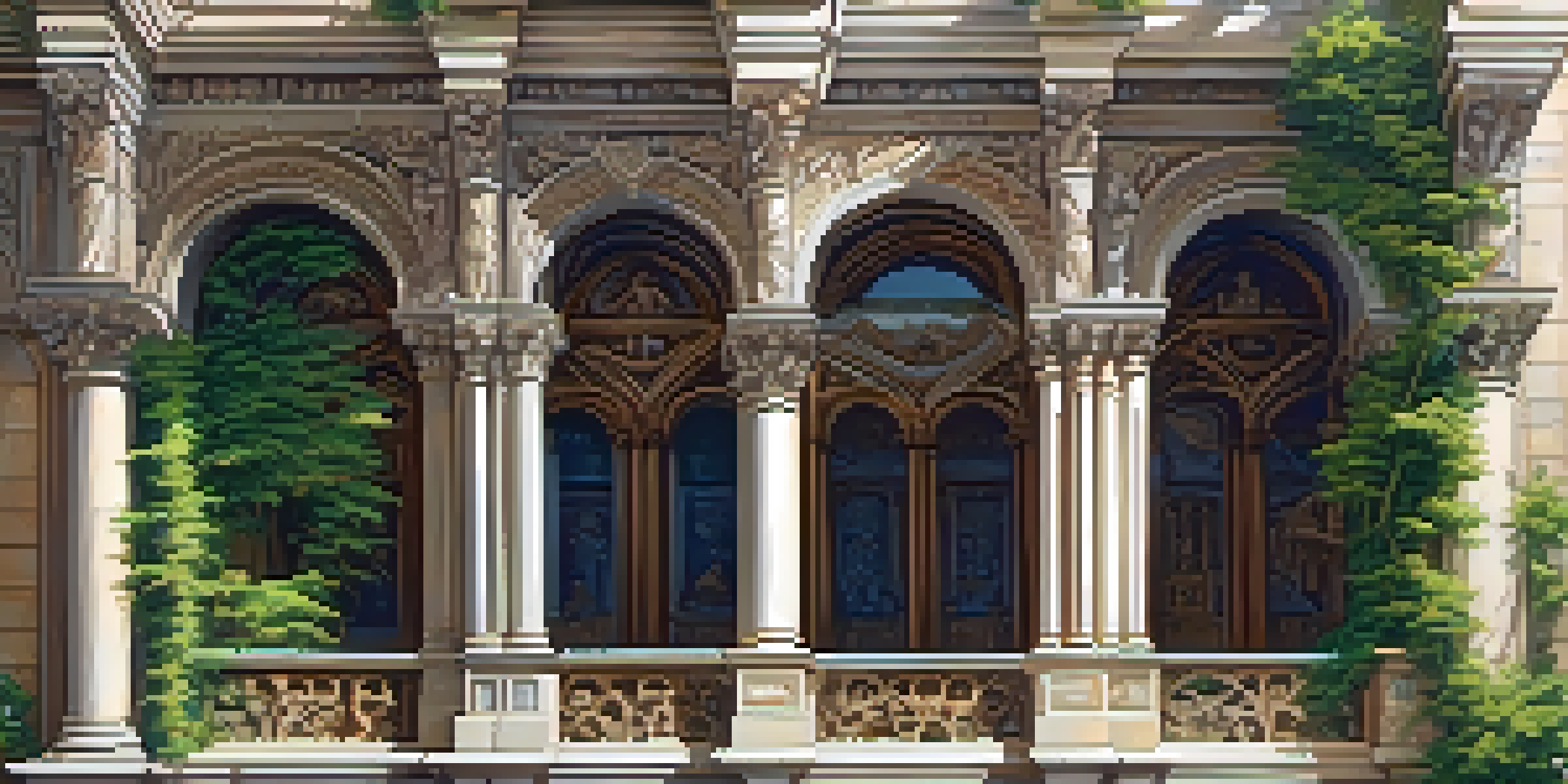Carving Techniques Used in Renaissance Architecture

The Importance of Carving in Renaissance Architecture
Carving played a crucial role in Renaissance architecture, serving both aesthetic and structural purposes. It allowed architects to showcase their skills and creativity, transforming simple buildings into masterpieces. This period marked a shift toward classical influences, where detailed carvings became a hallmark of design, reflecting the values and ideals of the time.
Relief Carving: A Window to the Past
Relief carving, where figures or designs are raised from a flat surface, was widely used in Renaissance architecture. This technique not only added depth and texture but also told stories through visual narratives. For example, many cathedrals featured intricate reliefs that depicted biblical scenes, captivating viewers and conveying religious messages.
Carving: Aesthetic and Structural Role
Carving in Renaissance architecture served both aesthetic and structural purposes, showcasing creativity while transforming buildings into masterpieces.
Sculptural Elements: Bringing Buildings to Life
Sculptural elements, such as statues and busts, were commonly integrated into the architecture of the Renaissance. These pieces often represented gods, heroes, or prominent figures of the time, enhancing the building’s grandeur. For instance, the famous façade of Santa Maria del Fiore in Florence showcases stunning sculptures that draw the eye and evoke admiration.
Use of Ornamental Details: Enhancing Aesthetics
Ornamental details like scrolls, foliage, and geometric patterns adorned many structures during the Renaissance. These elements were not just decorative but also symbolized harmony and balance, key principles of the era. Architects carefully crafted these details to create visually pleasing compositions that complemented the overall design.
Relief Carving Tells Visual Stories
Relief carving added depth and texture to structures, often depicting biblical scenes that conveyed important religious messages.
The Role of Stone Carving Techniques
Stone carving techniques were pivotal in bringing Renaissance designs to life. Skilled artisans used tools like chisels and hammers to shape stone, creating intricate details that defined structures. The precision required for these techniques reflects the high level of craftsmanship that characterized the period.
Wood Carving: A Versatile Medium
While stone was dominant, wood carving also played an essential role in Renaissance architecture. Wooden elements, such as doors and ceilings, were often lavishly decorated, showcasing elaborate designs. This versatility allowed for a range of styles and interpretations, making wood carving a beloved medium among craftsmen.
Legacy of Carving Techniques
The intricate carving techniques of the Renaissance have influenced various architectural styles, leaving a lasting legacy that inspires contemporary architects and artists.
Influence of Classical Antiquity on Carving
Renaissance architects drew significant inspiration from classical antiquity, particularly in their carving styles. They studied ancient Greek and Roman architecture, incorporating elements like columns and friezes into their designs. This revival of classical forms led to a fusion of old and new, creating a unique architectural language.
Legacy of Renaissance Carving Techniques
The carving techniques developed during the Renaissance have left a lasting legacy in architecture. Their influence can be seen in various styles that followed, from Baroque to Neoclassical. Today, the intricate carvings from this era continue to inspire architects and artists, reminding us of the creativity and skill of those who came before.